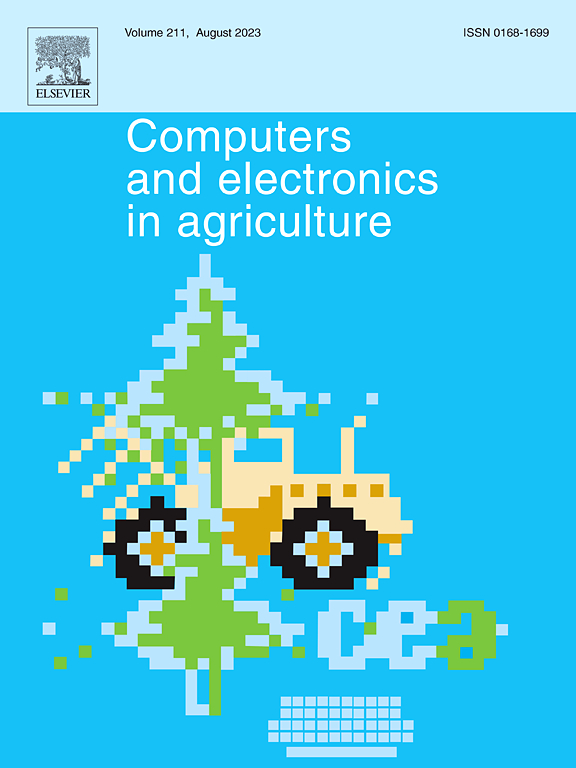Dynamic real-time detection for corn kernel breakage rate based on deep learning and sliding window technology
IF 7.7
1区 农林科学
Q1 AGRICULTURE, MULTIDISCIPLINARY
引用次数: 0
Abstract
Currently, the field of intelligent corn harvesting in China lacks effective methods for detecting corn kernel breakage. This paper explores and proposes a corn kernel detection technology that utilizes deep learning and sliding window technology, combined with a specially developed quantitative model, to enable real-time detection of the corn kernel breakage rate. In this study, we quantified the corn kernel mass at various levels of crushing and proposed a quantitative model for the corn kernel breakage rate, which is suitable for real-time computation by a computer vision system. We developed a specialized corn kernel detection device to generate high-quality datasets and retrain our previously proposed corn kernel breakage detection model (BCK-YOLOv7). Subsequently, ablation experiments were conducted to assess the generalization capability of the BCK-YOLOv7 model in corn kernel detection. Furthermore, we analyzed the limitations of single-frame detection through dynamic comparison experiments. To address the instability of single-frame detection results in the corn kernels flow state, we introduced the sliding window technique, which, along with pipeline technology, significantly enhances detection efficiency. Finally, the comprehensive performance of the proposed corn kernel breakage detection technology was validated through systematic testing. The results indicate that the relative error in the detection of the breakage rate remains around 7%, and the detection rate of the technology, when deployed on edge devices, can achieve 22 frames per second (FPS), thereby meeting the requirements for real-time detection of corn kernel breakage rate.
求助全文
约1分钟内获得全文
求助全文
来源期刊

Computers and Electronics in Agriculture
工程技术-计算机:跨学科应用
CiteScore
15.30
自引率
14.50%
发文量
800
审稿时长
62 days
期刊介绍:
Computers and Electronics in Agriculture provides international coverage of advancements in computer hardware, software, electronic instrumentation, and control systems applied to agricultural challenges. Encompassing agronomy, horticulture, forestry, aquaculture, and animal farming, the journal publishes original papers, reviews, and applications notes. It explores the use of computers and electronics in plant or animal agricultural production, covering topics like agricultural soils, water, pests, controlled environments, and waste. The scope extends to on-farm post-harvest operations and relevant technologies, including artificial intelligence, sensors, machine vision, robotics, networking, and simulation modeling. Its companion journal, Smart Agricultural Technology, continues the focus on smart applications in production agriculture.
 求助内容:
求助内容: 应助结果提醒方式:
应助结果提醒方式:


